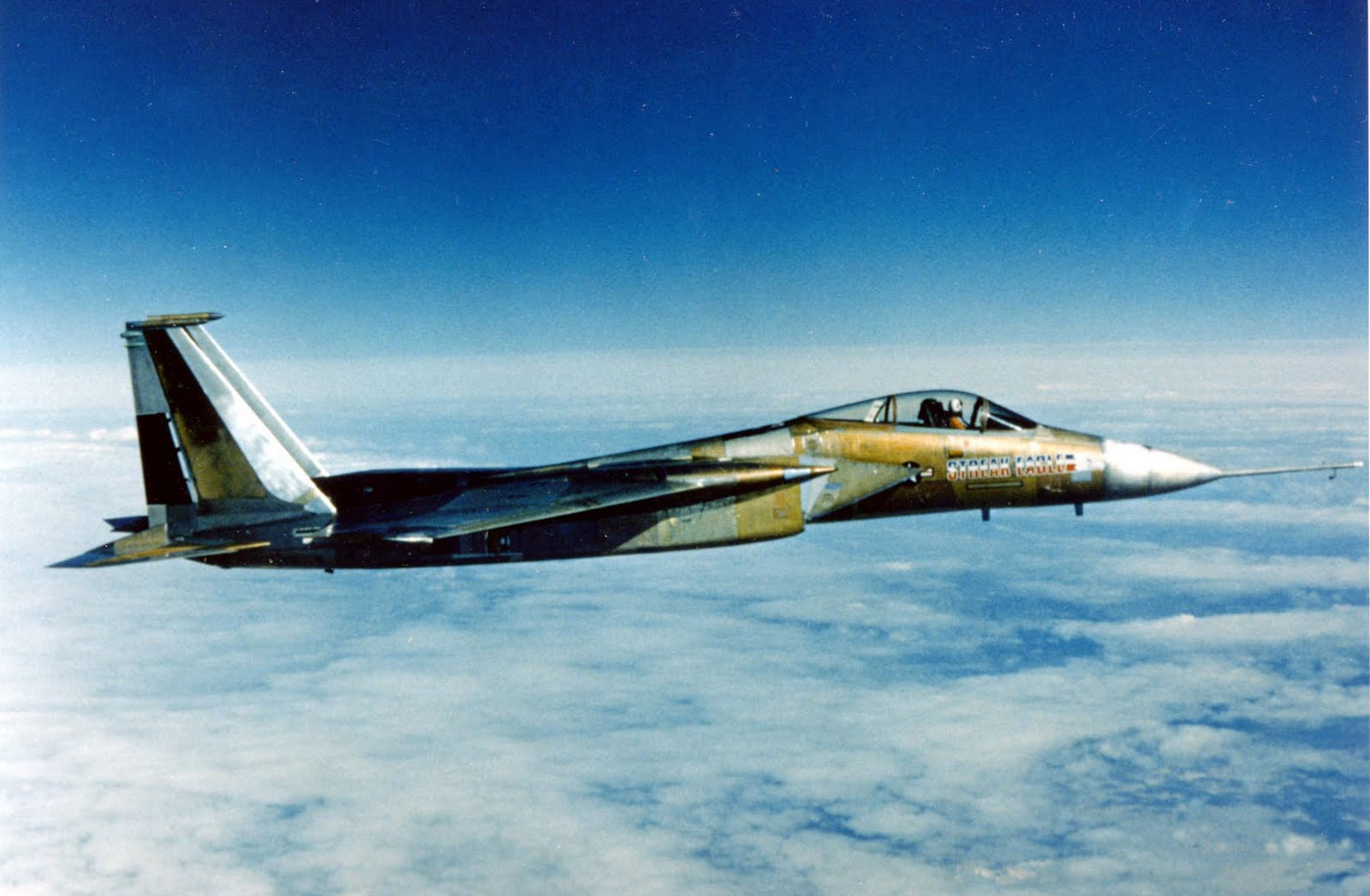

Smith took the first record: from brake release to 3,000 meters (9,843 feet) in 27.571 seconds.
The next three belonged to MacFarlane: 6,000 meters (19,685 feet), 39.335 seconds; 9,000 meters (29,528 feet), 48.863 seconds; and 12,000 meters (39,370 feet), 59.383 seconds.
The last record for the day went to Peterson, who reached 15,000 meters (49,213 feet) in 1 minute, 17.042 seconds.
Over the next two weeks they took the Streak Eagle even higher. On it’s left vertical fin is painted AQUILA MAXIMA. This airplane is in storage at the National Museum of the United States Air Force.
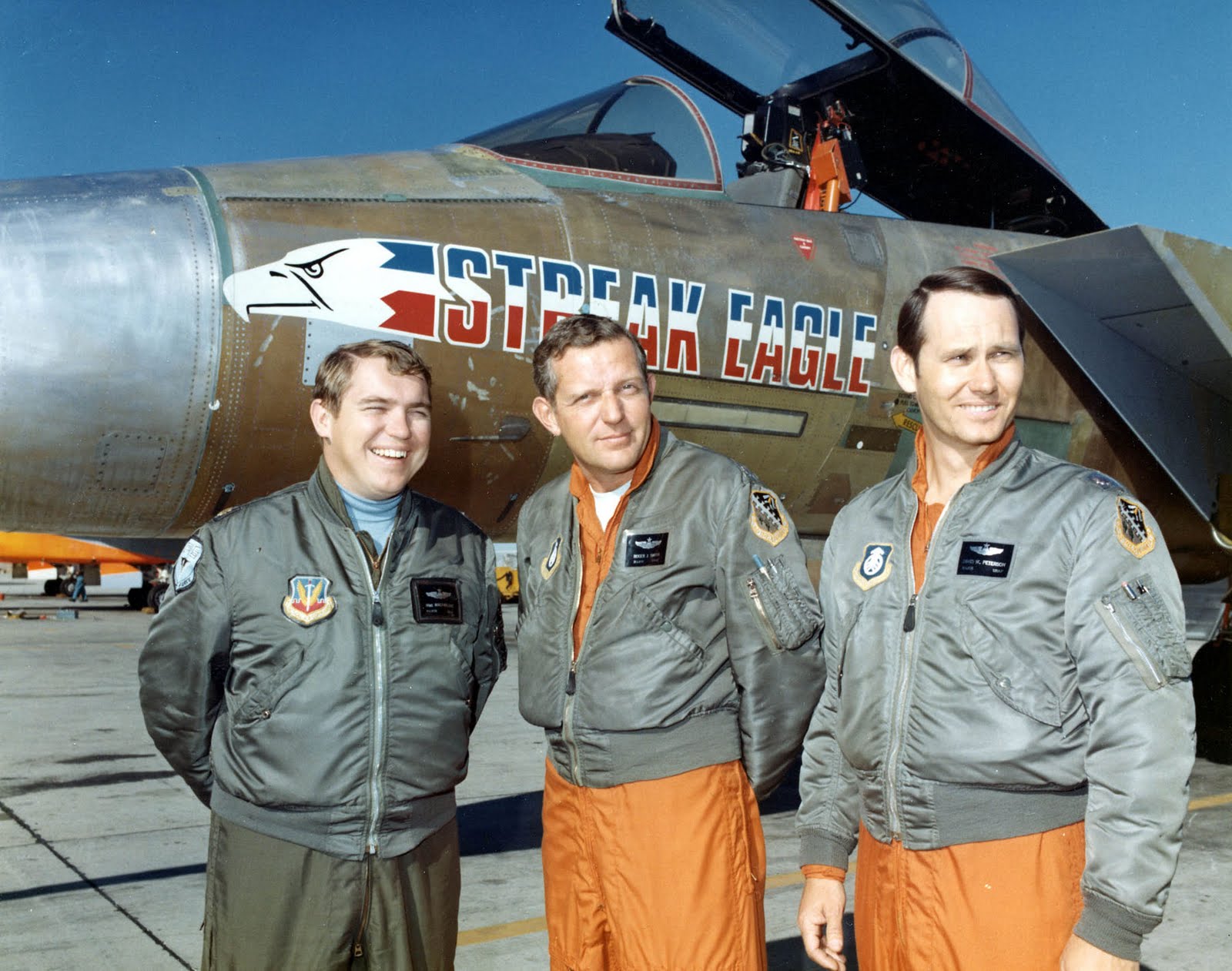
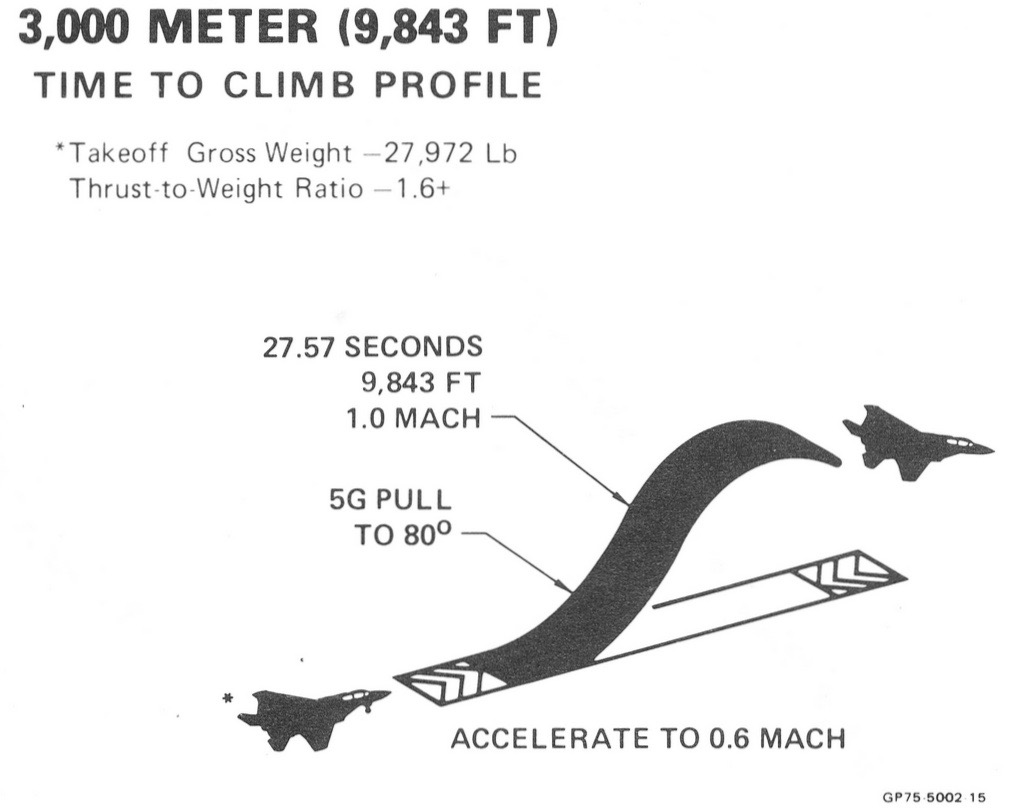
Status: ratified – retired by changes of the sporting code
Region: World
Class: C (Powered Aeroplanes)
Sub-Class: C-1 (Landplanes)
Category: Not applicable
Group: 3 : turbo-jet
Type of record: Time to climb to a height of 3 000 m
Performance: 27.571s
Date: 1975-01-16
Course/Location: Grand Forks, ND (USA)
Claimant Roger J. Smith (USA)
Aeroplane: McDonnell Douglas F-15
Engines: 2 Pratt & Whitney F-100
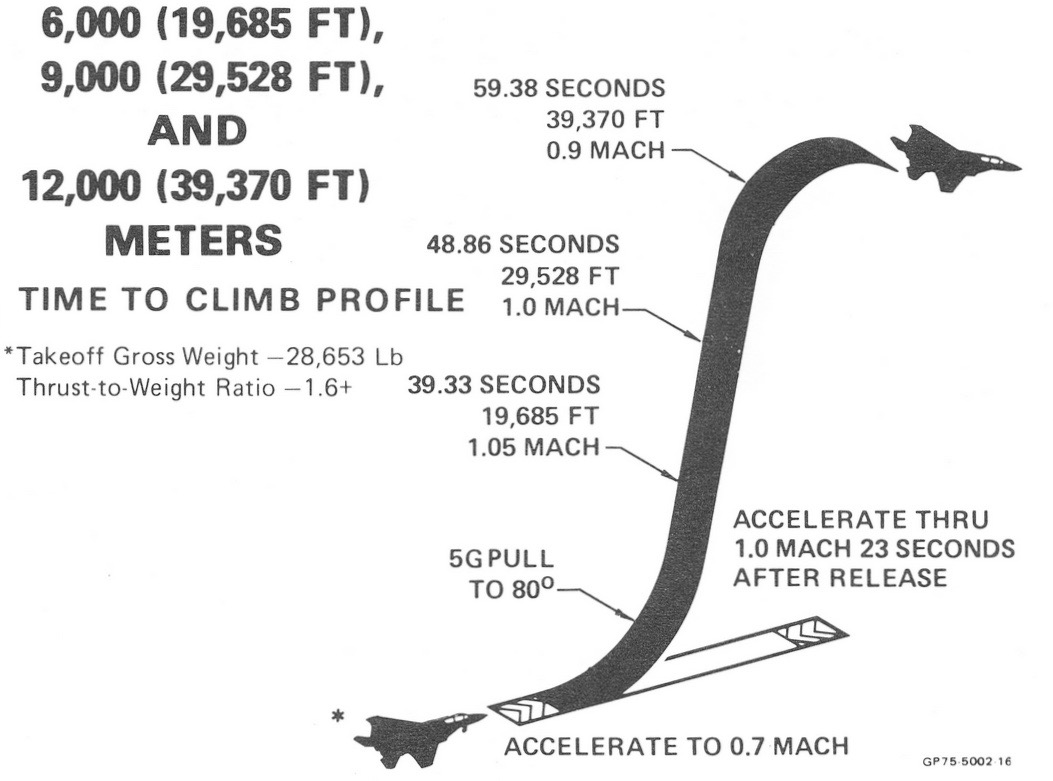
Status: ratified – retired by changes of the sporting code
Region: World
Class: C (Powered Aeroplanes)
Sub-Class: C-1 (Landplanes)
Category: Not applicable
Group: 3 : turbo-jet
Type of record: Time to climb to a height of 6 000 m
Performance: 39.335s
Date: 1975-01-16
Course/Location: Grand Forks, ND (USA)
Claimant William R. Macfarlane (USA)
Aeroplane: McDonnell Douglas F-15
Engines: 2 Pratt & Whitney F-100
FAI Record File Num #8600 [Direct Link]
Status: ratified – retired by changes of the sporting code
Region: World
Class: C (Powered Aeroplanes)
Sub-Class: C-1 (Landplanes)
Category: Not applicable
Group: 3 : turbo-jet
Type of record: Time to climb to a height of 9 000 m
Performance: 48.863s
Date: 1975-01-16
Course/Location: Grand Forks, ND (USA)
Claimant William R. Macfarlane (USA)
Aeroplane: McDonnell Douglas F-15
Engines: 2 Pratt & Whitney F-100
FAI Record File Num #8528 [Direct Link]
Status: ratified – retired by changes of the sporting code
Region: World
Class: C (Powered Aeroplanes)
Sub-Class: C-1 (Landplanes)
Category: Not applicable
Group: 3 : turbo-jet
Type of record: Time to climb to a height of 12 000 m
Performance: 59.383s
Date: 1975-01-16
Course/Location: Grand Forks, ND (USA)
Claimant William R. Macfarlane (USA)
Aeroplane: McDonnell Douglas F-15
Engines: 2 Pratt & Whitney F-100
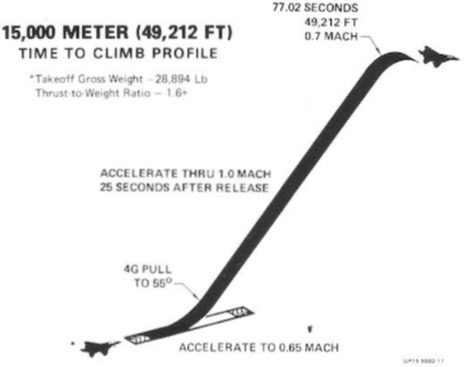
Status: ratified – retired by changes of the sporting code
Region: World
Class: C (Powered Aeroplanes)
Sub-Class: C-1 (Landplanes)
Category: Not applicable
Group: 3 : turbo-jet
Type of record: Time to climb to a height of 15 000 m
Performance: 1 min 17.042s
Date: 1975-01-16
Course/Location: Grand Forks, ND (USA)
Claimant David W. Peterson (USA)
Aeroplane: McDonnell Douglas F-15
Engines: 2 Pratt & Whitney F-100
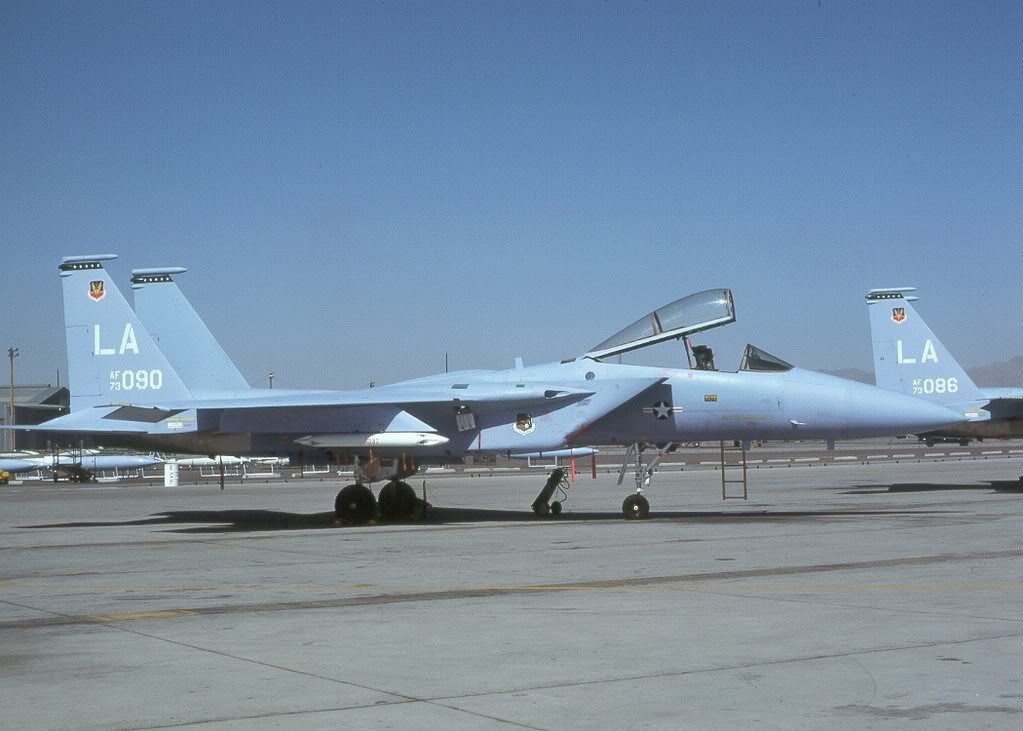


The cruise speed of the F-15A Eagle is 502 knots (578 miles per hour/930 kilometers per hour). It has a maximum speed of 893 knots (1,028 miles per hour/1,654 kilometers per hour) at 10,000 feet (3,048 meters), and 1,434 knots (1,650 miles per hour/2,656 kilometers per hour) at 45,000 feet (13,716 meters). The ceiling is 63,050 feet (19,218 meters) at maximum power. It can climb at an initial 67,250 feet per minute (342 meters per second) from Sea Level, and with a thrust-to-weight ratio of 1.15:1, The F-15 can climb straight up. The Eagle’s combat radius is 638 nautical miles (734 statute miles/1,182kilometers).
The F-15A is armed with one General Electric M61A1 Vulcan 20mm rotary cannon with 938 rounds of ammunition, four AIM-7 Sparrow radar-guided missiles and four AIM-9 Sidewinder heat-seeking missiles.
384 F-15A Eagles were built before production shifted to the improved F-15C version. As F-15Cs became operation, the F-15As were transferred to Air National Guard units assigned to defend continental U.S. airspace. The last F-15A was retired from service in 2009.
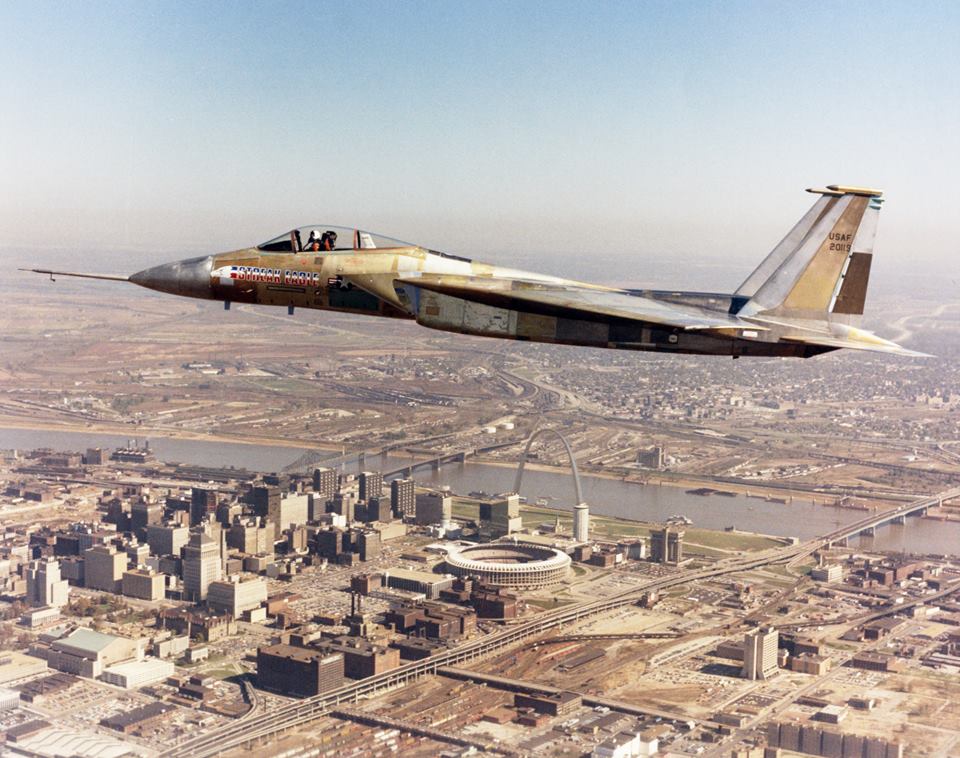

Other equipment was added: An extended pitot boom was mounted at the nose with alpha and beta vanes; equipment for the pilot’s David Clark Company A/P-225-6 full pressure suit; extremely sensitive accelerometers and other instrumentation; extra batteries; an in-cockpit video camera aimed over the pilot’s shoulder; and perhaps most important, a special hold-back device was installed in place of the fighter’s standard arresting hook.
These changes resulted in an airplane that was approximately 1,800 pounds (817 kilograms) lighter than the standard production F-15A. This gave it a thrust-to-weight ratio of 1.4:1.
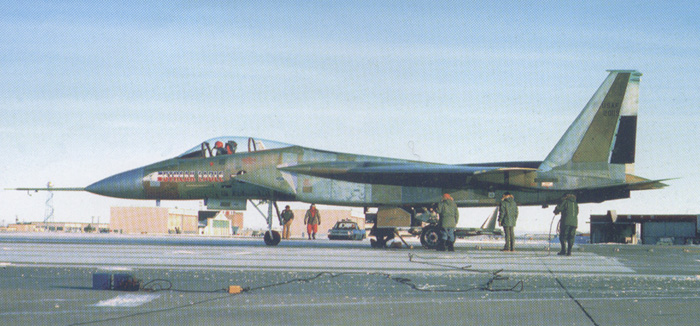
The flight profiles for the record attempts were developed by McDonnell Douglas Chief Developmental Test Pilot, Charles P. “Pete” Garrison (Lieutenant Colonel, U.S. Air Force, Retired).
Streak Eagle carried only enough fuel for each specific flight, and weighed from 27,972 to 31,908 pounds (12,688 to 14,473 kilograms). It was secured to the hold-back device on the runway and the engines were run up to full afterburner. It was released from the hold-back and was airborne in just three seconds.
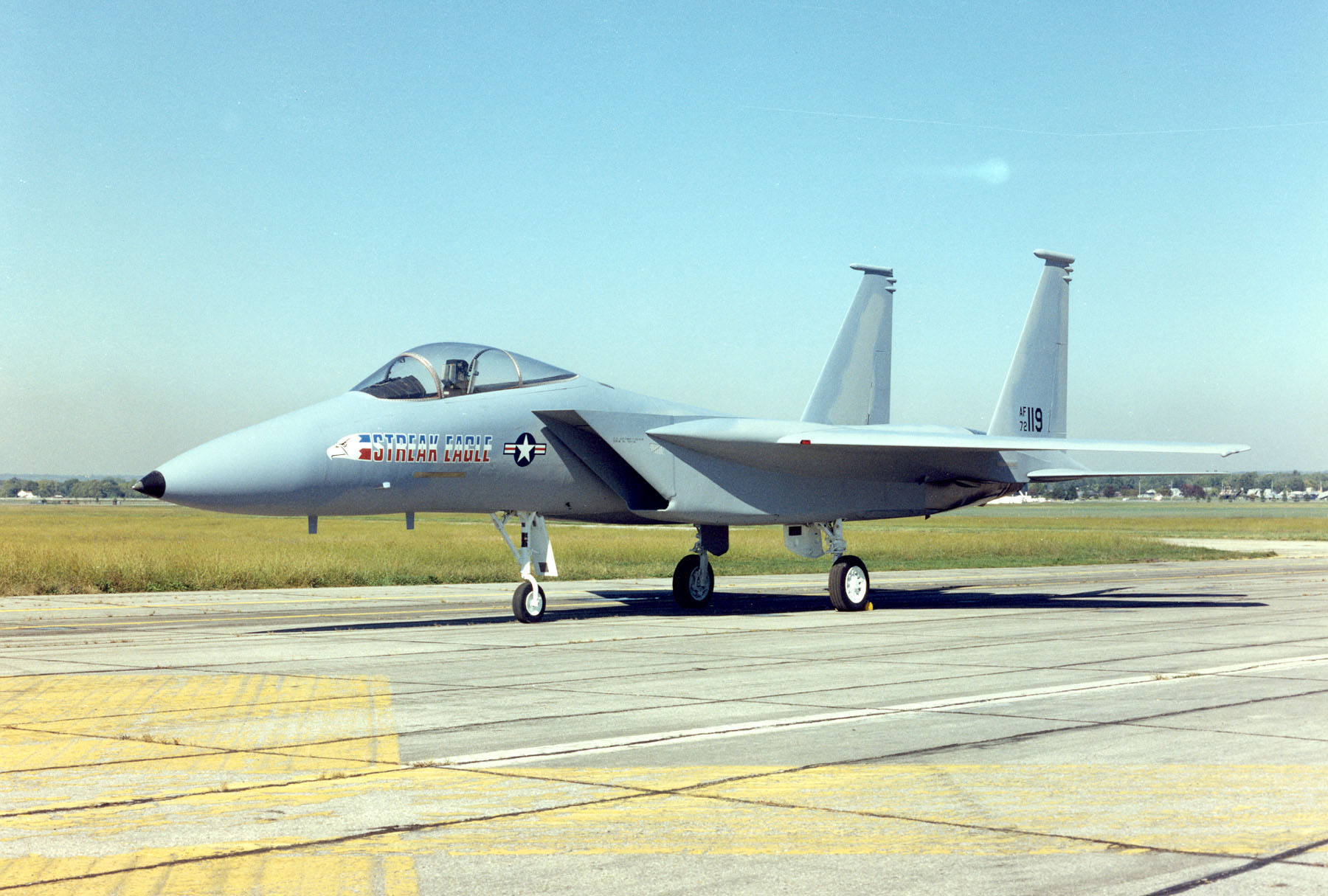
For many years, Streak Eagle was covered in gray paint to prevent corrosion. The paint has been stripped, returning the record-setting F-15A to its original appearance. It is now on public display in the R&D Hangar at the National Museum of the United States Air Force.

© 2025, Bryan R. Swopes
There are some great videos on this campaign: https://youtu.be/HLka4GoUbLo
It’s amazing what kind of performance you can get with a 1.4:1 T/W ratio.
Oh my! The video includes cockpit view of the altimeter spinning around during the higher climbs. Thanks Thomas for sharing that.
Astonishing to think that was nearly fifty years ago. Also that the F15 design is still in production? Who would have thought that singular designs, albeit continuously developed, could remain in build and use for so many decades! How things have changed.